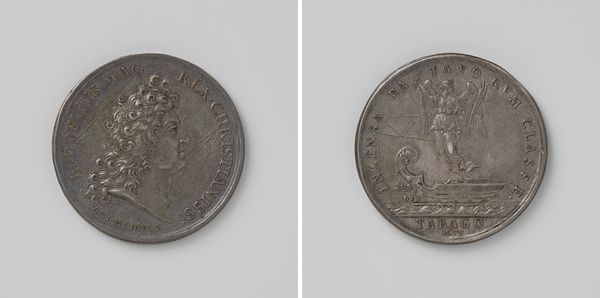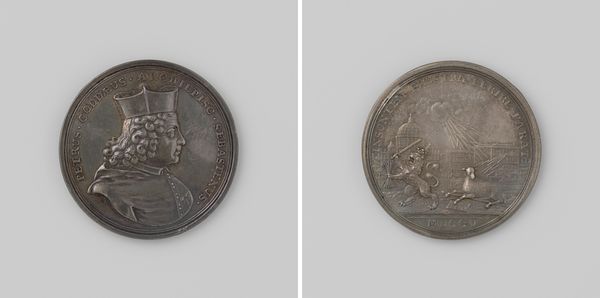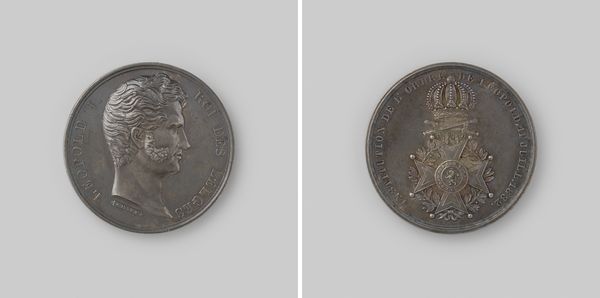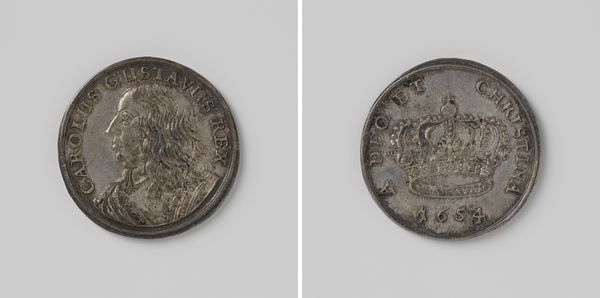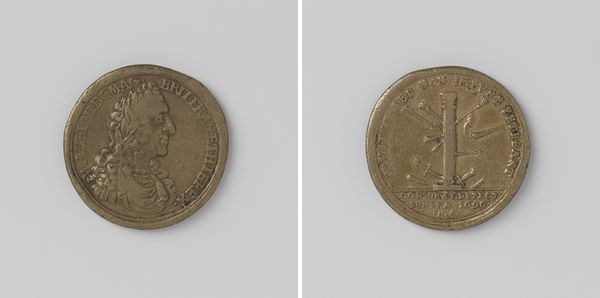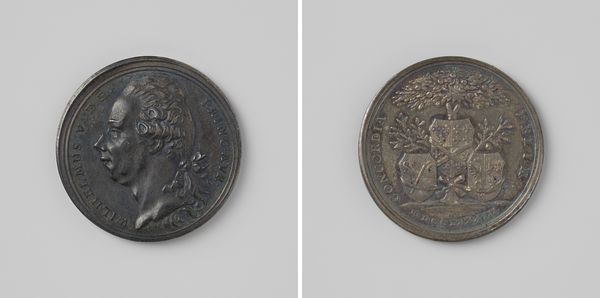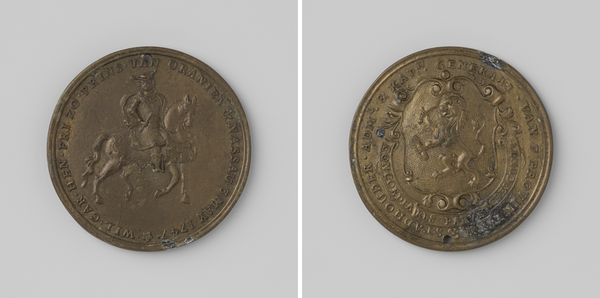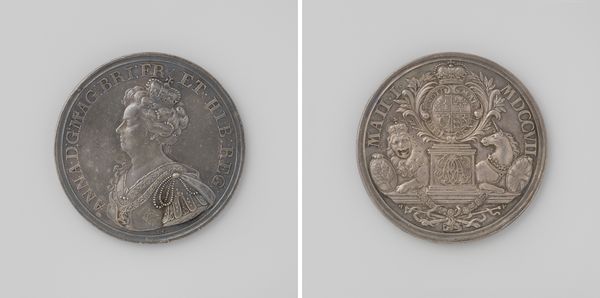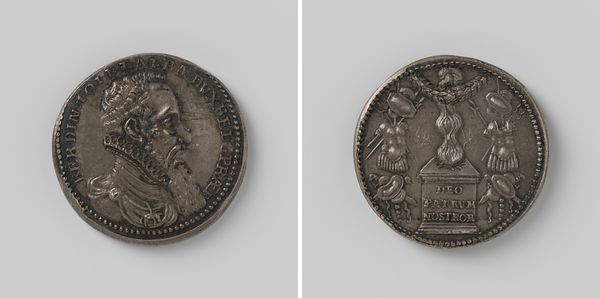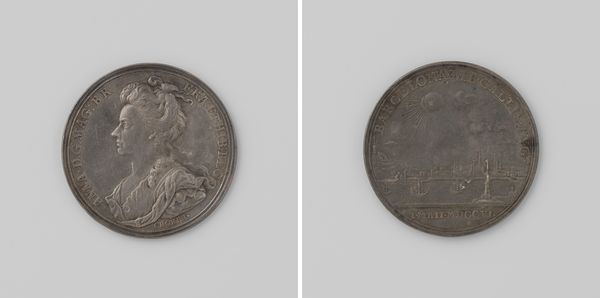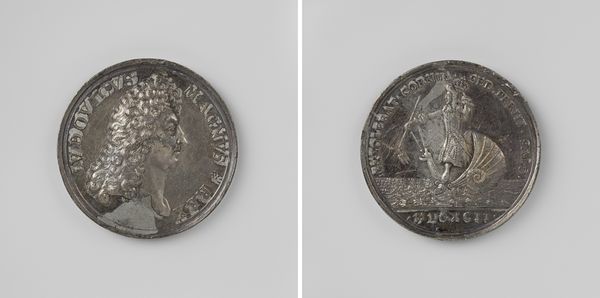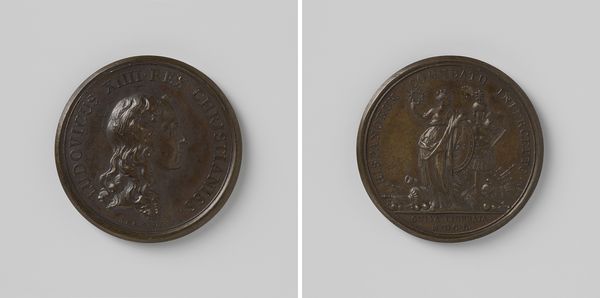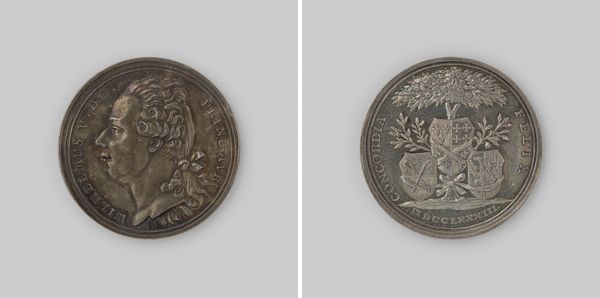
metal, sculpture
#
portrait
#
medal
#
baroque
#
metal
#
sculpture
#
history-painting
Dimensions: diameter 2.9 cm, weight 12.52 gr
Copyright: Rijks Museum: Open Domain
Editor: Here we have "Burning of the Dutch fleet near Tobago," created in 1677 out of metal by Anton Meybusch. It’s a rather small object, but the scenes and portrait are rendered with striking clarity. What do you make of its imagery? Curator: The image bears powerful symbols from its era. Do you see how the portrait of the king dominates one side, conveying authority, legitimacy? This face and the inscription are not simply identification; it is a statement about power, resonating with the concept of divine right of kings. And opposite, on the reverse side of this medal? Editor: I see a winged figure, like an angel or Victory, surrounded by what looks like smoke or flames. Is this tied to a specific victory? Curator: Exactly. The Dutch fleet’s burning near Tobago represents a significant historical moment, immortalized in visual language. Notice how fire, historically linked to destruction but also purification, consumes the ships. Victory stands triumphant, but over a scene of devastation. How might contemporaries interpret such contrasting symbols? Editor: Perhaps that even in destruction, there's a claim of triumph, a symbolic 'burning away' of opposition. Almost like alchemy, but with nations. Curator: A fascinating comparison. It is crucial to realize that symbols work on multiple layers. Religious and political ideals permeate this piece, revealing much about the collective mindset of the time, a cultural memory. Think of these potent symbols being passed from hand to hand… Editor: I hadn't considered it as a cultural memory object. The way the symbols condense such complex political messages for posterity, that's quite impactful. Curator: Indeed. What you see in its surface tells larger narratives.
Comments
No comments
Be the first to comment and join the conversation on the ultimate creative platform.
